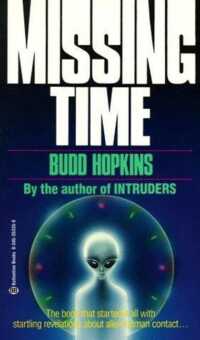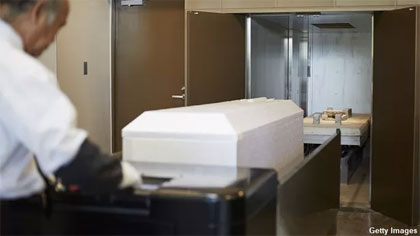Nick Redfern
My recent article on the Betty and Barney Hill “alien abduction” incident of September 1961 provoked quite a bit of feedback at Facebook and at my blog. So, with that in my mind, I thought I would share with you some of the primary figures in the abduction field from the 1970s onward. The person who largely, and almost single-handedly, kick-started the first part of this story of genetic manipulation of the Human Race by advanced extraterrestrials, was a Virginia-born painter named Budd Hopkins. It was Hopkins’ 1981 book, Missing Time, which really set the cat among the pigeons, even though Hopkins had been working in the field in the 1970s. The abduction stories of Betty and Barney Hill, Travis Walton, Herbert Schirmer, and Charles Hickson and Calvin Parker were undeniably fascinating and they most assuredly made the UFO research community sit up and take notice of something astounding: people were being kidnapped and subjected to intrusive and frightening medical procedures by creatures from other worlds. There is, however, an important issue that needs to be stressed, and which demonstrates how and why the sheer scale of the alien abduction phenomenon remained under-appreciated until Hopkins was on the scene in the late 70s and early 80s.
 Budd Hopkins
Budd Hopkins
The Hill case occurred in 1961. Herbert Schirmer was taken on board a UFO in 1967. Hickson and Parker’s abduction was in 1973. And Travis Walton was taken in 1975. That’s just four cases across fourteen years. Yes, there were other, less well profiled, abductions throughout that time period; but, the image that these incidents provoked was one which suggested abductions were things that occurred only now and again. For many, it was not a case of aliens routinely abducting people on a regular basis, all across the planet. Well, actually…it was. But it was Hopkins, whose abduction research began in 1976 that we have to thank for demonstrating that what appeared to be a few, random events was actually nothing of the sort. For Hopkins it was a downright epidemic.
More disturbing, Hopkins’ work showed that, in many cases, abductions did not begin when people matured and were adults. They commenced in the formative years of childhood and very often ran through numerous generations of the same families. In some cases, Hopkins found, people were being implanted with small devices – for purposes that no-one could ascertain. Maybe they were designed to tag people, allowing the ETs to track the abductees throughout their lives, and no matter where they might relocate to on the planet. A far more sinister theory was that the implants were designed to do nothing less than alter the behavior of the abductees. In no time at all, the days of Betty and Barney Hill were overthrown by fears of alien-orchestrated Manchurian Candidates and hypnotically-controlled abductees.
 Hopkins’ early work, as published in Missing Time in 1981, also sowed the seeds for something else: a deep and nagging suspicion that part of the alien abduction agenda – and, just perhaps, all of it – was based around matters of a reproductive nature. Hopkins asked of this issue: “What if the UFO occupants are taking something from their captives?” He answered his own question with the following: “We may indeed possess something – a natural resource, an element, a genetic structure – that an alien culture might desire to use, for example, as raw material.” Hopkins may well have been right on target with his references to a “genetic structure” and “raw material.” Hopkins’ book proved to be a major talking point within the field of Ufology and firmly set the scene for what was to follow.
Hopkins’ early work, as published in Missing Time in 1981, also sowed the seeds for something else: a deep and nagging suspicion that part of the alien abduction agenda – and, just perhaps, all of it – was based around matters of a reproductive nature. Hopkins asked of this issue: “What if the UFO occupants are taking something from their captives?” He answered his own question with the following: “We may indeed possess something – a natural resource, an element, a genetic structure – that an alien culture might desire to use, for example, as raw material.” Hopkins may well have been right on target with his references to a “genetic structure” and “raw material.” Hopkins’ book proved to be a major talking point within the field of Ufology and firmly set the scene for what was to follow.
Budd Hopkins continued to intensively investigate alien abduction claims in the 1980s, and to the extent that a clear pattern of DNA fingerprinting, the extraction of ova and sperm from abductees, and suspicions of a massive, alien-driven operation to use the Human Race in some huge, genetics-driven program took firm shape. It was, however, in 1987, that matters really came to a head. In that year, Hopkins’ follow-up book, Intruders, was published, and which told the story of alien abductee Kathie Davies. It was a book that reinforced the scenarios detailed in Missing Time. Hopkins continued his research and died in 2011.
MU
From Alien Abductions to Extracting Souls
Nick Redfern
When Whitley Strieber’s Communion book was published back in 1987, it became a huge hit. And, not just with the UFO research community, but with entire swathes of the public, too. Even the mainstream media paid the book a great deal of attention – in part, due to the fact that Strieber was already a very successful writer of atmospheric, thought-provoking horror fiction. His 1978 novel, The Wolfen, for example, was made into a successful movie in 1980. The massive attention shown to Communion was something that ufologists had seldom seen before. If ever. Largely, the UFO community speaks to itself and to no-one else. Strieber changed all that, and practically almost overnight. And Strieber changed something else, too. Take a look.
Whereas most authors of books on the subject of alien abductions, in the 1980s, focused solely on the extraterrestrial scientists are here to steal our DNA angle, Strieber did not. Certainly, Strieber dug deep into this particular issue; however, he certainly did not shy away from some of the far more controversial aspects of his own experiences with what he termed not aliens or extraterrestrials, but as the Visitors. It was a term Strieber used for a very good reason: he was not at all sure that his captors were alien – in the way we interpret the word, at least. Perhaps, he suggested, they represented something so strange that they are completely beyond our current comprehension. As Strieber noted, the Visitors had a deep interest in the human soul; that one solitary part of us which, billions believe, never dies.
 Whitley Strieber
Whitley Strieber
Not long after Communion hit the bookshelves, Strieber revealed that as a result of the phenomenal number of letters that had reached him, he was able to definitively state that the human soul was inextricably linked to the abduction puzzle. In his 1988 book Transformation, which was a direct follow-up to Communion, Strieber related a number of traumatic encounters involving abductees who felt that the Visitors / Greys had the ability to extract the immortal, human soul from the physical body. Not only that, they did so on numerous, regular occasions.
 Strieber received a response from the Visitors that offered an explanation for their connections to the soul. They told him two things. First of all, that they recycled souls, and second, that living on Earth is akin to being in a school, one in which we are learning, growing and evolving with every subsequent recycling. It’s a scenario that provokes imagery of some huge, bizarre factory, continually dispatching old souls into new bodies in almost conveyor-belt-style fashion. Perhaps, that’s exactly what is afoot – albeit in a very strange, near-unfathomable fashion that we have yet to come to grips with, or even understand.
Strieber received a response from the Visitors that offered an explanation for their connections to the soul. They told him two things. First of all, that they recycled souls, and second, that living on Earth is akin to being in a school, one in which we are learning, growing and evolving with every subsequent recycling. It’s a scenario that provokes imagery of some huge, bizarre factory, continually dispatching old souls into new bodies in almost conveyor-belt-style fashion. Perhaps, that’s exactly what is afoot – albeit in a very strange, near-unfathomable fashion that we have yet to come to grips with, or even understand.
Strieber was not the only one who came to realize that the alien abduction phenomenon was much weirder than most had imagined – maybe even weirder than most could ever imagine. One of them was the aforementioned Harvard-based Professor John E. Mack. Echoing Strieber’s words to a notable degree, Mack said that of the many and varied abductees he had helped and counseled, some felt that the entities they encountered were nothing less than soul-stealers. In his Passport to the Cosmos book, Mack described the story of an alien abductee named Greg. In Mack’s own words, “Greg told me that the terror of his encounters with certain reptilian beings was so intense that he feared being separated from his soul. ‘If I were to be separated from my soul,’ he said, ‘I would not have any sense of being. I think all my consciousness would go. I would cease to exist.‘”
MU
‘Dead’ woman in Argentina Discovered Alive Seconds Before Scheduled Cremation
 By Tim Binnall
By Tim Binnall
In a wild story out of Argentina, a daughter mourning the loss of her mother was stunned to discover that the ailing senior was still alive mere seconds before she was set to be cremated. The shocking turn of events reportedly took place in the city of Resistencia last week where the unnamed 89-year-old woman had been hospitalized for a few days. Upon visiting the facility one morning, her daughter was informed that she had, sadly, passed away from heart failure and was handed a death certificate stating as such.
Woman spots her ‘dead’ mother, 89, is ALIVE before she was CREMATED
Ryan Fahey
The 89-year-old woman was pronounced dead by doctors at a hospital in Resistencia, Argentina, following a cardia…
The woman’s body was then handed over to a funeral home where she was set to be cremated following a memorial service. However, as the daughter was saying what she thought was her final goodbye to her mother and workers prepared the conveyor belt which would send the remains into an incinerator, she suddenly noticed that the ‘corpse’ was displaying signs of life. The astounded woman quickly alerted personnel at the crematorium and managed to save her mother from a truly nightmarish demise.
The ‘undead’ woman was subsequently brought back to the hospital, where she is currently in the intensive care unit. And, as one might imagine, her daughter is not too thrilled with the clinic which declared her mother deceased, lambasting them for their malpractice and reporting the situation to the authorities, who now say that they plan to conduct a full investigation into the matter to determine how such a massive miscue could have happened.
coasttocoastam.com
